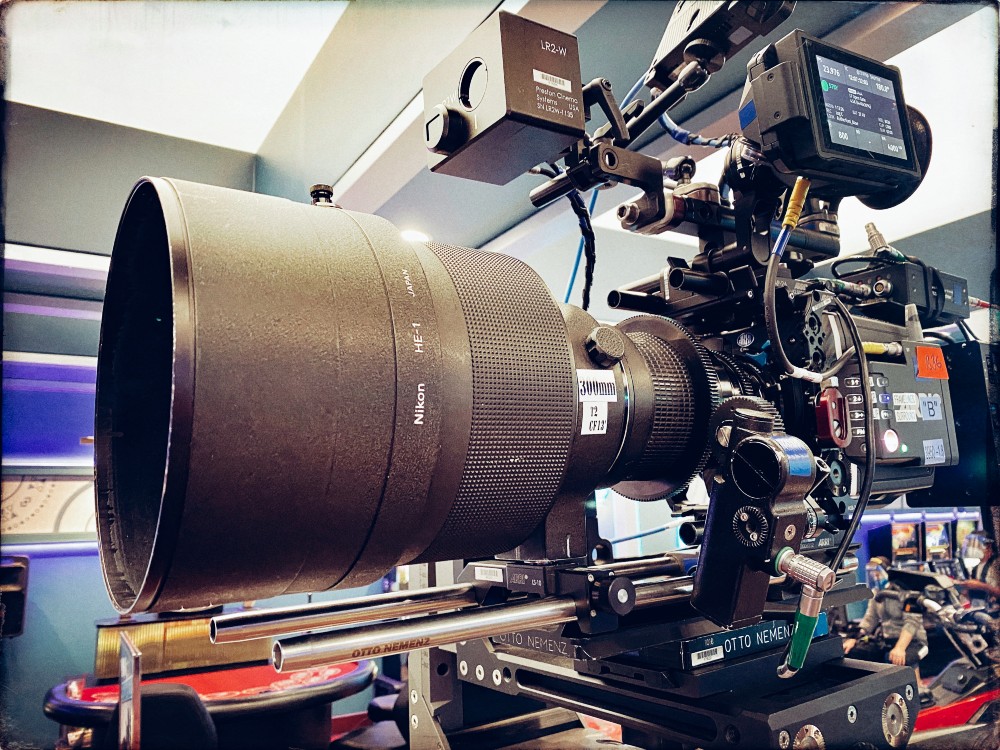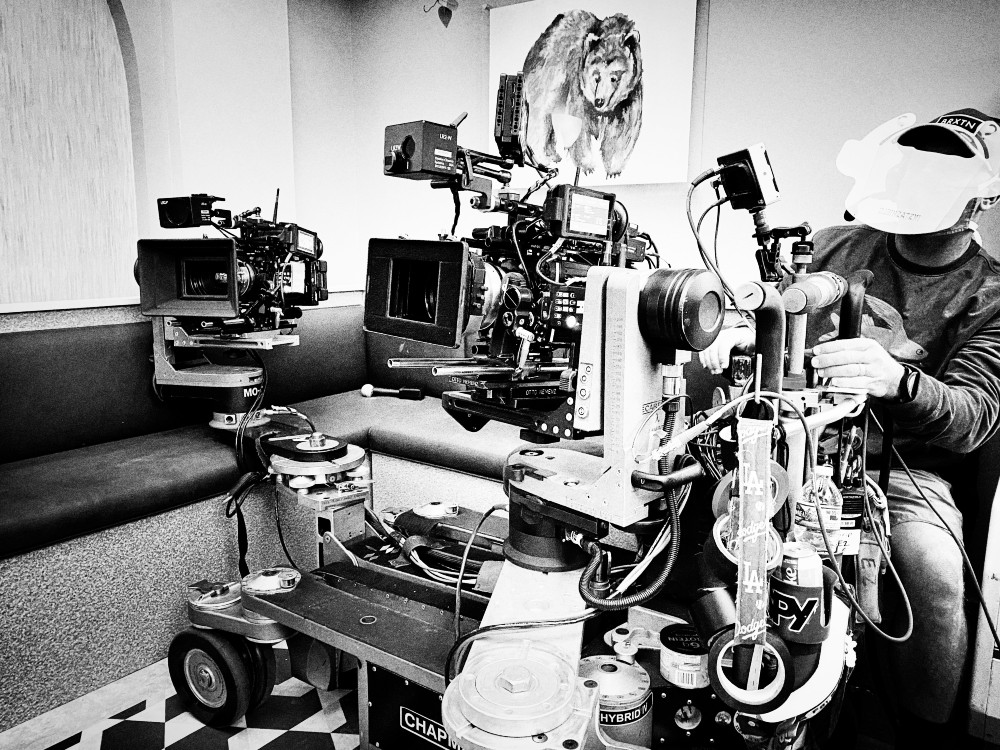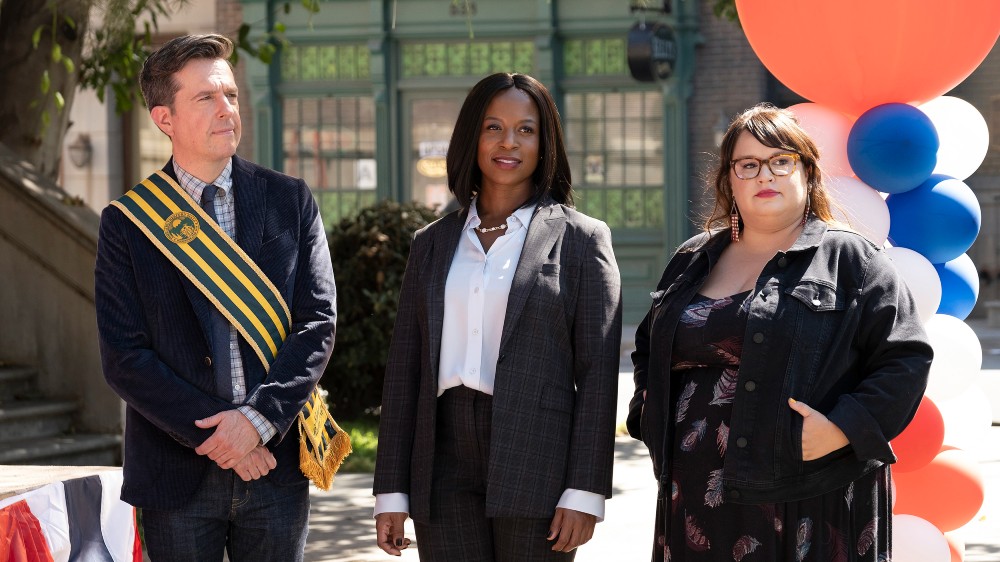
Set in a mythical New England town founded by British colonials, Rutherford Falls examines the clash of cultures between the original Native American inhabitants and the corporations who have taken financial control of the area. The 10-part series is full of whimsical comedy, but hits unexpectedly dark themes as well.
Co-creator and executive producer Sierra Teller Ornelas is one of five Native Americans writing for the series. The other co-creators are Michael Schur (Parks & Recreation) and Ed Helms, who also stars as Nathan Rutherford, a distant descendant of the town’s founders. The ensemble cast includes Native Americans Jana Schmieding as Nathan’s best friend Reagan, a historian torn about her tribe’s financial plans, and Michael Greyeyes as Terry, who runs the tribe’s casino.
Cinematographer Ross Riege has worked on several hit television series, including Selfie (2014), You’re the Worst (2014–15), and The Walking Dead: The World Beyond (2020).
Riege spoke with Below the Line by telephone from his home in Virginia.
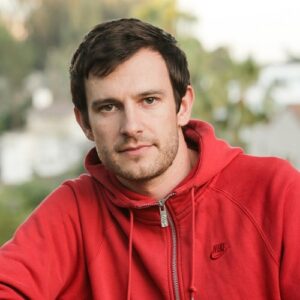
Below the Line: What brought you to Rutherford Falls?
Ross Riege: Sierra was a writer on a show I did a few years back called Selfie. I think that was the starting point. I came in and sat down with the producers, and we went from there.
BTL: Were the scripts ready when you came on?
Riege: They weren’t all done. This was February, 2020, so they had outlines and a fair amount of structure in place. When we went on pause in March, they were able to really flesh out the scripts over the course of the summer. When we came back and actually went back into production, there was a lot more in place in terms of the scripts.
BTL: How much time did you get to collaborate with the other department heads?
Riege: That was a really big part of prep, especially in terms of color in the locations. Right off the bat, we started talking references with Kathleen [Widomski], the Production Designer, what the palettes of the locations would be, what the color stories would be behind the characters that inhabit them.
Because we paused and restarted, it felt like we had two prep periods. In the second iteration they put a few more things on stage for the sake of keeping things small and close. There were definitely more conversations to be had after the COVID hiatus. In a way, it gave us a little bit of extra time to collaborate with the Production Designer and art department. A big part of how we chose to work on the show was integrating practicals into the sets, and you have to be really close with the art department for that.
Larry [Lawrence Sher] directed the first block of three episodes, I think we may have been hired simultaneously. I didn’t meet him until I was aboard. Larry is an acclaimed cinematographer, so he was really involved in every part of my job.
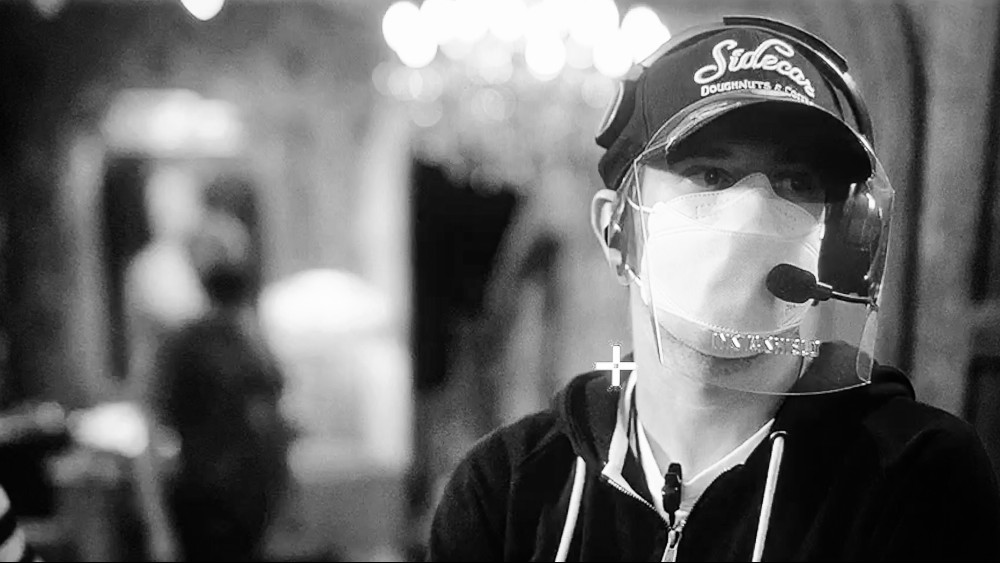
BTL: Was that intimidating?
Riege: Of course. I was really busy at the end of 2019, so I didn’t see Joker until early 2020, when he was in the Oscar promotional loop. After I saw Joker, I learned a lot more about Larry’s work. He was super-complimentary and gracious, and he’s incredibly collaborative. I saw it as an opportunity to learn a lot from him, but I also know that he’s extremely particular. The bar is set high, but as challenging as that looked, it made me that much more excited to do the project.
BTL: Did he work with his ShotDeck software program?
Riege: I had heard of ShotDeck, but hadn’t really played around with it until we started prep, because he uses it so heavily. He built decks for this, then we started one together so we could share ideas. ShotDeck keeps growing because it’s such a great tool. We could talk to other departments about how we wanted things to look, not just in terms of how Larry and I wanted the lens to cover things, but also in terms of the palette. You can be really specific about, for example, a tone of green, or straw, or other elements of the set. Everybody knows exactly what you’re talking about.
Larry is one of the smartest people I’ve ever worked with. He’s like an encyclopedia. The irony is, he devotes this time to ShotDeck, but I wouldn’t be surprised if he already has it all in his head anyway. It’s daunting because he can wear multiple hats at one time. If I ever thought about making the transition from shooting to directing, what makes me hesitate is that it would be hard to let go of the process of shooting in order to focus on all the things that come at you as a director. It was nice to see Larry step into that role, be capable of still having fleshed-out conversations with me and the art department and wardrobe without skipping a beat. It’s inspiring to know that it’s possible, but he’s also incredibly fit for it.
BTL: How did you decide what Rutherford Falls would look like?
Riege: Larry and I both came in at the beginning and thought this shouldn’t look like your typical half-hour comedy. I know that’s not a groundbreaking thing to say, everybody tries to bring a unique language to what they make. When I met with the producers, I immediately said we should shoot large-format. Some of that pitch was based on being able to get the camera physically closer to our characters on a wider focal length. We could feel the space around them without being on a super-wide lens that tended to distort their faces and was unflattering.
I thought that would be an interesting way of filming comedy, because there’s been a conversation about whether comedy plays better in the wide shots, maybe we don’t want to waste too much time on closeups, other things like that. This was an opportunity to use a larger sensor, to explore the way the optics behave, to show space and characters at the same time.
That’s one of the ways we started from a technical standpoint. We looked at the way the Coen brothers shoot comedy, because in this show there is an undercurrent of darkness as well. In prep we talked about Fargo, where you have a small town and all its inhabitants. Part of the reason Fargo is funny is because it has a grounded element. In a still from any scene, you feel like that space has a voice. Without even hearing the dialogue or seeing the frame in motion, you already get the sense of the character. And so that was really something we were trying to go for.
BTL: The large format gave you the opportunity to have wider closeups?
Riege: Well, using wider lenses closer, yes. If we’re shooting on a standard Alexa, if I put a 24mm lens super close, you start to distort the face. When you’re in large format, you can do the same thing on a 40mm and it won’t distort quite as much. You will still have the field of view that you get with a smaller sensor. What’s great about it is you get a flattering closeup, but you also see more of the space around them. Also, things are shallower in large format. You could feel the fall off, get a separation, which we really liked.
We shot with the Alexa Mini LF with MasterBuilt prime lenses and some Leica-R primes as well. When we came back in the fall, as a safety precaution we added a third full-time camera crew in case we lost some crew to contact tracing or positive tests. We didn’t shoot like a multicam show by any means, but we did make use of the third camera more than I would have expected, to be honest. So we had two Mini LF and one standard LF.
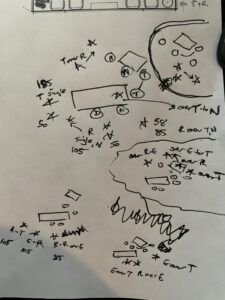 BTL: How did you avoid making Rutherford Falls look like a multicam sitcom?
BTL: How did you avoid making Rutherford Falls look like a multicam sitcom?
Riege: We approached it as a single-camera show. There’s almost always another camera shooting another angle, but we were really decisive about where to put it. Are you just getting more footage, or is it a shot you really want to use? Is it a throwaway shot, or is it something that is useful and has a voice? At times we had three cameras on stage, but we were only using one because there wasn’t a useful place to put the others.
Instead of stacking two cameras next to each with different-sized lenses, which is really common, especially in comedy, we would use our A camera to do all the tight eyeline shots, and offset the B camera if we needed it.
There are a handful of times where we shot cross coverage in slightly different ways. We would butt two cameras so they were shooting away from each other. Then we could shoot at the same time clean single shots of two characters talking to each other, instead of shooting over the shoulder. We worked with the actors to keep their eye lines super tight. They were basically looking right past the camera.
We experimented with that a bit in prep. We had a “zero” day where we shot one scene to see what it would be like with COVID testing in the morning and rotating crew members out. We chose a two-hander scene with Jenna and Ed, the two of them in Nathan’s workshop. After covering the scene in a standard manner, we tried to see if this inside, cross-coverage would work. The actors were prepped, we set everything up, and it worked out great.
BTL: How did the COVID protocols affect your work? Did you have less time per episode?
Riege: Time is the biggest thing. It’s always tight to begin with. We went down to 10-hour days with walking lunches. So we had less time to shoot than we normally would. And then of course, you’re all wearing so much more stuff on your face. People get as used to it as they can, but it’s never completely comfortable. We ended up using headsets, so I was able to communicate remotely not only with my camera crew and Larry, but also the gaffer, my key grip.
We shot in three-episode blocks, which blurs the lines a bit. We shot the 10 episodes over 13 weeks, however that works out. The nature of block shooting means you try to group things together for efficiency. It will be like we do a scene from episode one in the morning, then a scene from the middle of episode three, then back to a scene from episode two.
BTL: You could pre-light some sets that were used frequently, like Nathan’s museum with its wonderful golden glow.
Riege: With the museum, we wanted you to feel the history a little bit. We always talked about the curtains feeling like the light was always trying to fight to get in from outside. Then contrast that with the casino, which is all artificial lighting. You rarely have windows to the outside.
It helps the characters to have these spaces. One of the things I really like about the show is that there is no clear protagonist or antagonist when you get down to it. You want to cheer for Nathan, Ed’s character, but he doesn’t realize what his history means, the dark side of it. I think it’s cool to not say that the villains wear black hats and the heroes white ones.
BTL: Terry is a good example of that.
Riege: All the actors were such a pleasure to work with, but it was always fun to bring Michael into a space. A lot of his spaces are tough lights, fluorescents. Sometimes we would set up something simple, we’d light the space and he would walk in. And I wouldn’t know if I should add anything, he already looked so good. I was like, “Am I overthinking?” One of the things I admired about Joker was you couldn’t believe how much of it was lit with practicals. That made me a lot more willing to take my hands off a little bit, be more secure in that type of photography.
Rutherford Falls is available to stream on Peacock.

